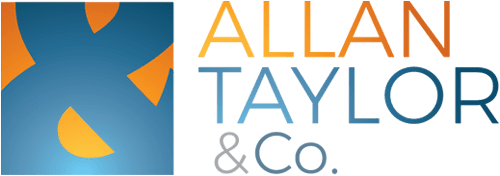As a business owner, you may have grown particularly aware of retention and employee turnover. A recent study found that 55% of the American workforce intends to look for new employment at some point in the next 12 months.
One option you can consider offering your workers is an Employee Stock Ownership Plan (ESOP). This article will cover what an Employee Stock Ownership Plan is, how it works, ESOP pros and cons, and the types of companies that should be considering this program.
What Is an Employee Stock Ownership Plan?
According to the Internal Revenue Service, an Employee Stock Ownership Plan “is an IRC section 401(a) qualified defined contribution plan that is a stock bonus plan or a stock bonus/money purchase plan.”
In layman’s terms, an ESOP is an employee benefit plan designed specifically to allow employees to own a part of the company they work for. Though it’s rare, it’s possible for ESOP companies to be 100% employee-owned, meaning the company is owned exclusively by employees past and present.
How Do ESOPs Work?
If you’d like to implement an Employee Stock Ownership Plan, you’ll first need to establish an ESOP trust. From there, you will fund the trust with shares. To do so, you have the choice to issue new shares or put cash into the trust, which you can then use to repurchase shares from existing owners.
ESOP participants then receive shares from the trust. Your company’s management team can determine the best way to leverage the ESOP plan. For instance, some companies structure the plan so that allocations are proportional to an employee’s pay. Additionally, the longer someone works for a company, the more shares are deposited into their employee account (this is known as vesting).
Employees are not necessarily required to participate in the program, though it must be accessible to all those older than 21. Typically, when an employee leaves the company, the company will buy out the employee’s shares. The purchase price must be at fair market value. The employee/selling shareholder can receive cash or rollover funds into a qualified retirement plan, like a 401(k) or IRA.
One last note — only businesses structured as S or C corporations are eligible to implement ESOPs. If you’re structured as an LLC, or partnership, you will need to restructure your business before implementing an ESOP.
What Are the Pros of an ESOP?

If you’re considering implementing an ESOP, there are a few advantages that stand out immediately.
Tax Advantages
Once the ESOP owns 100% of the company stock, your company will not pay federal income taxes. This can obviously give your business a huge advantage, allowing it to have better net margins and more cash to reinvest.
Being tax exempt could also be advantageous if you face foreign competition. For instance, let’s say your competitors are based in another country with a lower tax rate. An ESOP allows you to level the playing field, if not skew it more in your favor.
Rewards Employees
ESOPs allow the owner to reward employees for all of their hard work. This may be especially important to owners who are soon exiting the company. ESOPs can be a great tool for supporting employee morale, as well as bolstering employee retention rates.
Maintains Owner’s Legacy
An ESOP ensures that all of the employees, including upper management, stay on to run the business after the founder has completed their exit. Let’s say, for instance, that you are garnering attraction from strategic buyers.
While you want to make money on the sale of your business, you do not want to see another buyer come in and completely change your existing operations. An ESOP allows you to pass ownership to your employees and maintain the legacy that you’ve built as the owner.
What Are the Cons of an ESOP?
There’s a lot to like about ESOPs, but that’s not to say they don’t have their downsides as well. Below are the main cons of ESOPs that you should consider.
Lower Business Valuation
The stock of the company can only be sold to the ESOP at fair market value. Many outside buyers are willing to pay a premium, so the owner forgoes the opportunity to sell for the highest price.
As mentioned in the previous section, a strategic buyer may be willing to pay well above market value for your company. However, you can’t sell the company at a premium since you are capped at a fair market value price.
Long Transition Period
When implementing an ESOP, owners need to start grooming upper management to take over leadership as early as possible. Succession plans often take years to complete. It can also take longer for the exiting owner to get their entire payout, as the ESOP typically buys shares of the company over time until it owns 100%. It can take 7–10 years to fully exit through an ESOP.
High Expenses
It can cost more than $100,000 to set up an ESOP. There are also ongoing costs associated with maintaining the ESOP, such as trustee fees. An annual valuation is required, and — as a retirement plan — the ESOP is subject to regulatory oversight and compliance.
What Types of Companies Should Be Considering an ESOP?
Now that you have a better understanding of ESOP pros and cons, you may be wondering whether an ESOP is right for you and your employees. Though each company’s situation is unique, it’s probably not worth considering an ESOP unless your company has the following basic characteristics:
- At least 50 employees
- Consistent financial performance (year over year)
- An open, transparent, and flat corporate culture (as opposed to one that is hierarchical)
As mentioned, if you would like to start an Employee Stock Ownership Program, you will need to establish an ESOP trust. However, before you do so, you will need to first have an ESOP feasibility study conducted for your business.
There are both paid and unpaid feasibility studies available. You can use a free version to receive a high-level overview of whether you meet the initial benchmarks needed to start the program. However, you’ll need an in-depth, paid version before implementing the plan.
The feasibility study will likely contain the following components:
- A business valuation
- An assessment of your management team and a plan for the ownership transition (you’re transferring ownership to employees)
- An equity analysis and a breakdown of the plan administration costs, including ESOP trustee fees
- A liquidity study to determine how future ESOP transactions will impact cash flow
ESOPs can be a great employee benefit, but you’ll want to make sure that they’re the right fit for your company. Otherwise, you can do long-lasting financial harm to your company. Be sure to hire experienced advisors to conduct your feasibility study so that you can make an informed decision about whether an ESOP is right for your business.
Take Time to Understand ESOP Pros and Cons Before Implementation
If you’re looking for ways to retain your employees, one option you’re likely to consider is an Employee Stock Ownership Program. However, it’s important to understand the ESOP pros and cons before moving forward with one.
While ESOPs offer tax benefits and can boost employee morale, there are downsides to keep in mind. These programs can be expensive and potentially lower the value of your business, which could impact your long-term exit strategy.
While weighing the pros and cons of ESOPs, it’s wise to have a feasibility study conducted to better determine whether an ESOP is right for your company and, if so, the best way to go about implementing it.
Reach out to the trusted team of advisors at Allan Taylor & Co to learn more about how we can help you reach your business goals.



